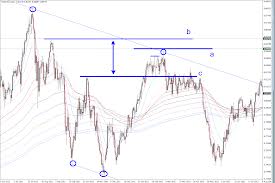Entry Levels, Stop Losses and Profit Targets
 Once we understand some of the basic characteristics of the spread bettors mind set, we must start to think about getting specific with trades and finding ways to determine when to get into a position, how to prevent excessive losses, and when to exit the trade at a gain. This part of the process can seem daunting to many new spread bettors because this is where theory is put into practice and it is come to get specific about when and where we are actually going to put money into these markets and make trades active. Here, we will look at three basic (yet highly critical) elements of the trading process: Trade Entries, Stop Losses and Profit Targets.
Once we understand some of the basic characteristics of the spread bettors mind set, we must start to think about getting specific with trades and finding ways to determine when to get into a position, how to prevent excessive losses, and when to exit the trade at a gain. This part of the process can seem daunting to many new spread bettors because this is where theory is put into practice and it is come to get specific about when and where we are actually going to put money into these markets and make trades active. Here, we will look at three basic (yet highly critical) elements of the trading process: Trade Entries, Stop Losses and Profit Targets.
Initiating Active Positions with Trade Entries
Before trades are placed with real money, it is important to research the main elements that influence markets and drive price activity. Once you feel confident with this information, it is time to start putting money to work and making trades. To do this, we must find a directional bias and then settle on specific price levels to enter into spread betting positions. Do you believe the price of the asset will rise in the future? If this is the case, you will enter into “long positions” and buy the asset before the anticipated upward price movement occurs. If your opinion is the reverse (and you believe the asset price will fall), you will want to enter into “short positions” and sell the asset before its values decline. To determine which direction prices are likely to travel, travels typically use technical or fundamental analysis, and these will be explained in greater detail in later sections.
Protect Your Trading Account with Stop Losses
Entering into a position is only the first part of the trade. It is always important to protect yourself from adverse moves and possible price gaps in times of market volatility. To do this, traders will set a “stop loss,” which the price at which your trade will close if markets move too far in the wrong direction. For example, if you buy into the S&P 500 at 1450, you can set a stop loss at 1435 and this will prevent your trade from losing more than 15 points in value. So, if an unexpected surprise caused the S&P 500 to fall to 1400, your trade would automatically close much earlier (at 1435), and you would be protected from the extra losses.
For sell positions, stop losses are placed above the trade entry. So, similar to the example above, we could sell the S&P 500 at 1450 and place a stop loss at 1465 in order to limit potential losses to 15 points. These stop loss levels are flexible, however, and can be set anywhere you choose (in order to match your risk tolerance).
Know When to Capture Gains
Where stop losses trigger for trades that are unsuccessful, “profit target” orders are triggered for trades that move in the right direction. Sticking with our S&P 500 example, let’s say we buy again at 1450. Favorable economic news is then seen and stock market values move higher. The S&P moves to trade at 1480, giving us 30 points in profits. At some point, we need to make the decision to close the trade and take these gains.
To do this, traders can set “profit target” orders, which will automatically close the position once a certain price level is reached. These orders can be based on a variety of factors. We can set the target certain number points above the price, a percentage gain above the price (for example, if the S&P 500 gains 2%), or using a Dollar value above the price (for example, we might close the trade once it makes $100). For short sell positions, all of these values would be below the initial trade price, as we would be looking for asset values to drop in order to make gains.
Use a Demo Account before Going Live
Trade Entries, Stop Losses, and Profit Targets are the three central order elements when we are looking to place trades with a specific structure. It is generally a good idea to use all of these elements when spread betting as this provides additional protection and makes it so that you will not need to actively watch your trading platform all of the time when these positions are open. All of these elements should be practiced using a demo account at first, as this will help prevent you from making mistakes that would cost real money with a live account. Once all of these factors are understood and easy to replicate, it will be time to move on to a live account using real money.